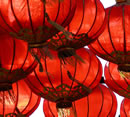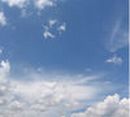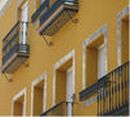The second layer of my drawing project, showing the bone structure underneath the skin on the face. I used the actual face as a guideline for the structure, using actual shape information to determine how the skull would look for each individual.
Friday 25 April 2014
Portraits - Bone
The second layer of my drawing project, showing the bone structure underneath the skin on the face. I used the actual face as a guideline for the structure, using actual shape information to determine how the skull would look for each individual.
Portraits
The main portraits for my drawing project, each one is conveyed using only line to dictate shape, light and shade.
Self Directed - Paintings
The 3 colour paintings for the self directed project. The pictures aren't phenominal, but convey the idea of the work. I'm most pleased with the yellow one, by a long way. I think I may even prefer the photographs...
RED/BLUE/YELLOW
The photographs used as reference for the self directed paintings. I manipulated them in Photoshop to give them the impression of being affected by coloured light.
Physcological Properties of Colour
Source: http://www.colour-affects.co.uk/psychological-properties-of-colours
RED. Physical
Positive: Physical courage, strength, warmth, energy, basic survival, 'fight or flight', stimulation, masculinity, excitement. Negative: Defiance, aggression, visual impact, strain.
Being the longest wavelength, red is a powerful colour. Although not technically the most visible, it has the property of appearing to be nearer than it is and therefore it grabs our attention first. Hence its effectiveness in traffic lights the world over. Its effect is physical; it stimulates us and raises the pulse rate, giving the impression that time is passing faster than it is. It relates to the masculine principle and can activate the "fight or flight" instinct. Red is strong, and very basic. Pure red is the simplest colour, with no subtlety. It is stimulating and lively, very friendly. At the same time, it can be perceived as demanding and aggressive.
|  |
BLUE. Intellectual.
Positive: Intelligence, communication, trust, efficiency, serenity, duty, logic, coolness, reflection, calm. Negative: Coldness, aloofness, lack of emotion, unfriendliness.
Blue is the colour of the mind and is essentially soothing; it affects us mentally, rather than the physical reaction we have to red. Strong blues will stimulate clear thought and lighter, soft blues will calm the mind and aid concentration. Consequently it is serene and mentally calming. It is the colour of clear communication. Blue objects do not appear to be as close to us as red ones. Time and again in research, blue is the world's favourite colour. However, it can be perceived as cold, unemotional and unfriendly.
|  |
YELLOW. Emotional
Positive: Optimism, confidence, self-esteem, extraversion, emotional strength, friendliness, creativity. Negative: Irrationality, fear, emotional fragility, depression, anxiety, suicide.
The yellow wavelength is relatively long and essentially stimulating. In this case the stimulus is emotional, therefore yellow is the strongest colour, psychologically. The right yellow will lift our spirits and our self-esteem; it is the colour of confidence and optimism. Too much of it, or the wrong tone in relation to the other tones in a colour scheme, can cause self-esteem to plummet, giving rise to fear and anxiety. Our "yellow streak" can surface.
|  |
Thursday 24 April 2014
Derek Cianfrance - Blue Valentine
These screenshots are from the movie Blue Valentine by Derek Cianfrance, I've looked at this scene as the coloured lighting is hugely significant to conveying a tone for the scene. The scene involves a married couple who have come to a seedy hotel in hopes of recindling something within their broken relationship. The colours have a distinctly cold, and clinical feel - highlighting the lovelessness of their relationship. The colour blue is often synonymous with sadness.
David Fincher - Se7en (Lust Scene)
In this scene from the David Fincher movie 'Se7en' - the two detective protagonist detectives investigate a murder at an extremely seedy brothel. The music is thumping and the surroundings saturated with red light throughout the scene. The colour conveys a sense of danger, but also represents sex which makes up the environment around them. It also conjures images of blood, which relates to the crime scene.
Oliver Kugler
These drawings of regular pedestrians by Oliver Kugler have interested me greatly. Rather than just traditional portraits, the artist takes into account their surroundings but also what they do and their daily routines. I think it's a really interesting way of interpreting people. I also really like the artists use of line.
Jo Ratcliffe - Stüssy
This is a piece Jo Ratcliffe did for New York streetwear brand Stüssy. I like the boldness of the work, how she's used just black on white to create something very high contrast and striking.
Self Portrait
This is a self portrait I created. I started by striping away the most minute of details, only keeping important structural or lighting information. Aside from the background, the piece is entirely comprised of black and white. The shading is created by using equal distanced lines in succession, this is a technique similar to halftone shading, which is a method used in very old printing techniques.
Jesper Waldersten
I was drawn to Walderstons strong use of line in his work, something I'd like to do with mine. He creates very striking imagery by warping and manipulating the subject, as well as choosing only to properly display certain elements.
Jean Debuffet
Jean Debuffet is a very interesting artist in the way he segments the portraits into specific regions. This creates a form of structure in the faces. Despite stripping away several details they are still very recognizable and clear.
Nicolas Winding Refn - Only God Forgives
These are screenshots from the Nicolas Winding Refn film, Only God Forgives. Throughout the movie there is a heavy emphasis on lighting of different colours. This lighting is used to convey a feeling, from cold blue, through an uneasy and uncomfortable yellow to a dangerous red. The film is highly effective in its use of emotive colour.
Dan Flavin
Dan Flavin is an artist who's work I have already experienced in person (Link), I find his work interesting not so much for the installations themselves, but how they react with the viewers presence. A huge part of the work is how the colour changes the appearance of people in the space, and also how the colours mix and cast shadows and colours on the walls.
James Turrell
James Turrell's work is very effective in creating somewhat otherworldly environments. The use of colour combinations creates an unnatural environment. I like how the light reacts to the people viewing, incorporating them into the work - not just the lighting.
Atkinson Grimshaw
I really like these paitings by Atkinson Grimshaw. The way the light pierces through the murky night colours is very visually interesting I and creates a strong sense of atmosphere. You can feel the light as if it were a character in the works and not 'just' lighting.
I previously looked at another of Grimshaw's works here: http://greens13192474.blogspot.co.uk/2014/01/atkinson-grimshaw-liverpool-quay-by.html
I previously looked at another of Grimshaw's works here: http://greens13192474.blogspot.co.uk/2014/01/atkinson-grimshaw-liverpool-quay-by.html
Subscribe to:
Posts (Atom)







































.jpg)

















